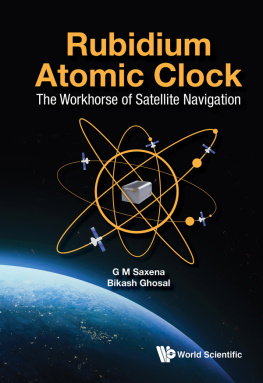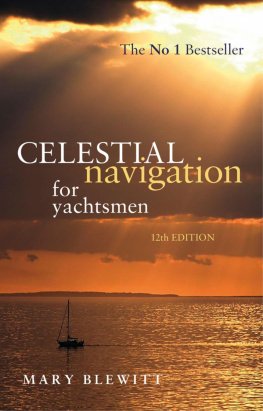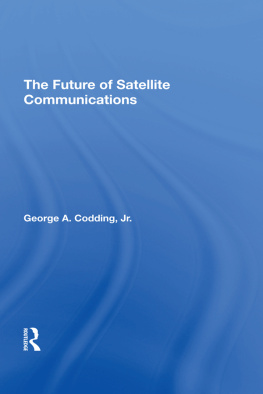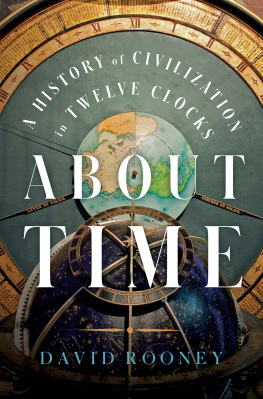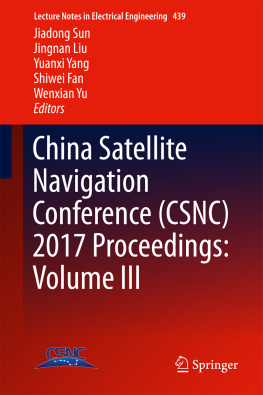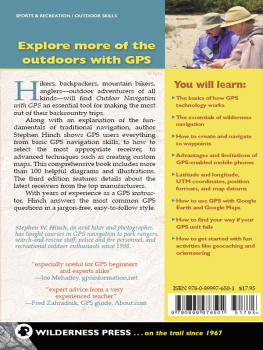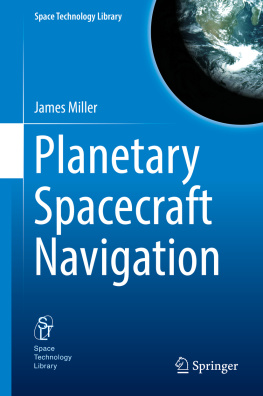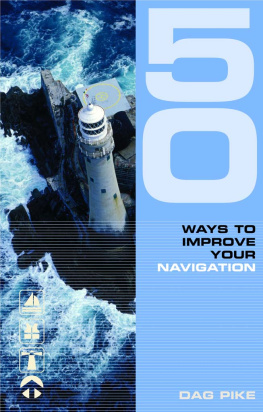Contents
Pagebreaks of the print version

Rubidium Atomic Clock
The Workhorse of Satellite Navigation
Rubidium Atomic Clock
The Workhorse of Satellite Navigation
G M Saxena
National Physical Laboratory, India
Bikash Ghosal
Space Applications Centre, India

Published by
World Scientific Publishing Co. Pte. Ltd.
5 Toh Tuck Link, Singapore 596224
USA office: 27 Warren Street, Suite 401-402, Hackensack, NJ 07601
UK office: 57 Shelton Street, Covent Garden, London WC2H 9HE
British Library Cataloguing-in-Publication Data
A catalogue record for this book is available from the British Library.
RUBIDIUM ATOMIC CLOCK
The Workhorse of Satellite Navigation
Copyright 2020 by World Scientific Publishing Co. Pte. Ltd.
All rights reserved. This book, or parts thereof, may not be reproduced in any form or by any means, electronic or mechanical, including photocopying, recording or any information storage and retrieval system now known or to be invented, without written permission from the publisher.
For photocopying of material in this volume, please pay a copying fee through the Copyright Clearance Center, Inc., 222 Rosewood Drive, Danvers, MA 01923, USA. In this case permission to photocopy is not required from the publisher.
ISBN 978-981-3279-48-3
For any available supplementary material, please visit
https://www.worldscientific.com/worldscibooks/10.1142/11249#t=suppl
Desk Editor: Cheryl Heng
Typeset by Stallion Press
Email:
Printed in Singapore
I (GMS) am pleased to dedicate this book to my grand-daughter,
Ishika
(Daughter of Shilpi and Bhavya)
an inspiration for conceptualizing and writing this book
Preface
Time is the most important part of human lives and their activities. Since time immemorial, Time measurement remained in the central stage of all kinds of measurements and underwent numerous and far reaching changes. At present, different kinds of atomic clocks are being used in telecommunication, digital financial transactions, space explorations and many other applications. The satellite navigation has become integral part of everyones life, as it helps in navigating to ones destination, even in rainy days or dark nights, in thick forests or advanced metropolis, with a precision of a few centimetres to metres. All this could be possible because of the on-board Rubidium (Rb) atomic clocks. To highlight the accuracy and stability of these Rb atomic clocks, we should know that an inaccuracy of 1/100th of a Second may lead to a positional error of 30000 km. So, for an accuracy of a few cms/metres in our day to day GPS guided travel by cars or app based Taxis or in others scientific and commercial activities, the role of these Rb atomic clocks and their accuracy can be appreciated. It is natural to ask how the highly accurate Time ticks of the on-board atomic clocks help in achieving the precision in distance. Simple, at the heart of (Global Navigation Satellite System) GNSS workings, is the fundamental relation among distance, light velocity and time i.e., Distance = Velocity Time. The Rb atomic clocks have gained the place of pride in satellite navigation, because of their light weight and small size, leaving behind several state-of-the-art atomic clocks. These state-of-the-art atomic clocks could not challenge Rb clocks supremacy in the satellite navigation systems like GPS, GLONASS, GALILEO, COMPASS and IRNSS. Most of the on-board atomic clocks in these satellite navigation systems are Rb atomic clocks. It is rightly the darling and workhorse of the satellite navigation systems. In spite of being one of the earliest and the oldest atomic clocks, researchers are still working on it, to unfold its mysteries and improve its performance. All this sums up the intense curiosity to explore, what is so special about this clock and as a result bring about the conceptualization of this book. In the book, history of time keeping and chronological development of clocks are included. The Rb atomic clock is described including all its details with special attention on its critical part the Physics package. The Physics package mainly decides the performance of the clock. Now sit back and enjoy reading about the Rb atomic clock. Special efforts are made to describe the Rb atomic clock in a simple way, to benefit the maximum readership. This is perhaps, the only book of its kind, giving all the details of the Rb atomic clock in one place and one needs not shuffle numerous papers and literature to get abridged information on the clock. All in all, the researchers and the industrialists interested in R&D and producing Rb atomic clocks, as a marketable state-of-the-art product, will find the book very useful and practical. In the last chapter, the recipe for developing/manufacturing the Rb atomic clock is given, that should be quite useful even for those interested in developing the Rb atomic clocks for the first time.
G M Saxena
Bikash Ghosal
Acknowledgement
With a great sense of gratitude, I (GMS) wish to express my regards and appreciation for Prof B.S. Mathur, who introduced me to the subject of optical pumping and Rb atomic clock. The free access to him for the discussions on these complex subjects, is highly appreciated. We are thankful to the present and the former Directors, National Physical Laboratory, New Delhi India and SAC-ISRO, for making it possible to do experimental R&D work on Rb atomic clocks. This enriched our experience in the theoretical and experimental aspects of the Rb atomic clock. The experience gained as the leader (GMS) of CSIR-NPL and SAC-ISRO India collaborative project on Rb atomic clock for IRNSS, helped in understanding the stringencies of space qualification of the Rb atomic clock. Dr Pardeep Mohan, Dr S S Verma, Mr A. Banik, Mr Satender Singh, Ms Savita Singh and SAC-ISRO scientists need special mention for their contribution in the work on the Rb atomic clock. We thankfully, acknowledge the institutions, laboratories where we worked and gained wide-ranging experiences that helped immensely in conceptualizing this book. The unclassified information on internet have been used in this book and we sincerely acknowledge all those web sites and their creators.
Contents
List of Tables
List of Figures
Glossary and Acronyms
ADC Analog to Digital Converter
AD Allan Deviation
ADS Advanced Design System
AFS Atomic frequency standard or atomic clock
BTC Baseplate Temperature Controller
C-Field D.C magnetic bias field applied to Rb Physics Package
CPT Coherent Population Trapping
CSAC Chip Scale Atomic Clock
DAC Digital to Analog Converter
DDS Direct Digital Synthesizer
DSP Digital Signal Processing
DVM Design Verification Model
EMI Electromagnetic Interference
ETM Engineering Thermal Model
GLONASS Global Russian Navigation Satellite System
GPS Global Positioning System
HEMT High Electron Mobility Transistor
HFFS High Frequency Field Simulation
IRNSS Indian Regional Navigation Satellite System
ISRO Indian Space Research Organization
LIA Lock-in Amplifier
LS Light Shift
MCS Master Control Station

